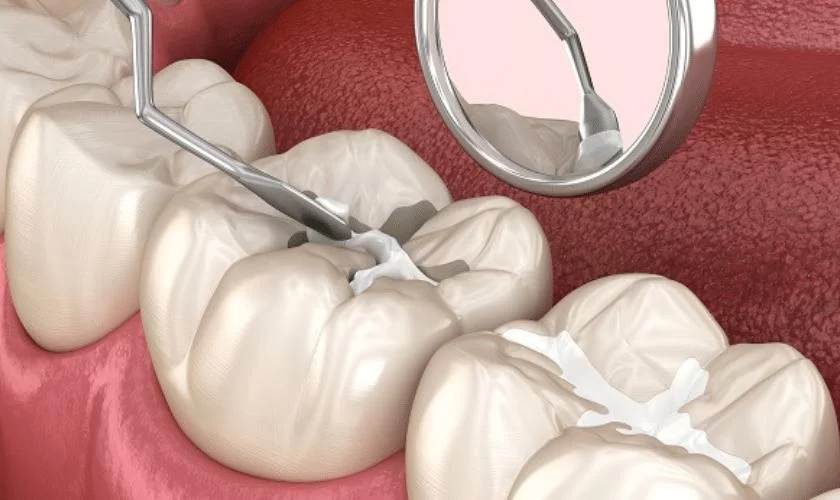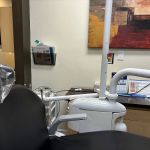
- Importance of Proper Care for Dental Sealants
- Immediate Post-Application Care for Sealants
- Long-Term Maintenance and Monitoring of Sealants
- Common Mistakes to Avoid in Sealant Care
- Real-Life Examples Demonstrating Effective Sealant Care
- Professional Recommendations and Resources
1. Importance of Proper Care for Dental Sealants
Dental sealants are a preventive dental treatment designed to protect the chewing surfaces of your teeth, especially the molars, from cavities and decay. While sealants act as a strong barrier against harmful bacteria and food particles, their effectiveness depends largely on how well you care for them after application. Understanding how to care for dental sealants after application ensures that they last as long as possible, providing maximum protection and preserving your oral health.
Proper care helps prevent sealants from cracking, peeling, or wearing down prematurely. This maintenance also plays a role in reducing the need for additional dental procedures, ultimately saving time and costs.
2. Immediate Post-Application Care for Sealants
Right after getting dental sealants applied, patients should follow specific guidelines to protect the new layer while it sets properly. This includes:
2.1 Avoiding Hard or Sticky Foods
For the first 24 hours, it’s advisable to avoid hard, crunchy, or sticky foods that can dislodge or damage the sealant before it fully cures.
2.2 Gentle Oral Hygiene Practices
Brushing and flossing gently around the sealed teeth ensures no premature wear occurs. Using a soft-bristled toothbrush and non-abrasive toothpaste can help maintain the sealant’s integrity.
2.3 Monitoring Sensitivity or Discomfort
Mild sensitivity after sealant application is normal, but persistent discomfort should be reported to your dentist promptly to rule out complications.
3. Long-Term Maintenance and Monitoring of Sealants
Dental sealants require ongoing care similar to your natural teeth. The key components of long-term maintenance include:
3.1 Regular Dental Check-Ups
Visiting your dentist at least twice a year allows professional monitoring of the sealant condition. Dentists can detect early signs of wear or damage and reapply sealants if necessary.
3.2 Consistent Oral Hygiene
Daily brushing twice and flossing once remain essential to prevent decay around the sealant margins. Special attention should be paid to the sealed teeth to avoid plaque buildup.
3.3 Avoiding Habits That Damage Sealants
Chewing ice, biting fingernails, or opening packages with your teeth can all weaken sealants prematurely. Avoiding these habits prolongs sealant life.
4. Common Mistakes to Avoid in Sealant Care
Many patients unintentionally harm their dental sealants through:
4.1 Ignoring Sealant Damage Signs
Cracks, chips, or rough edges around sealants should not be overlooked. Delaying repair can expose teeth to decay.
4.2 Overlooking Oral Hygiene Near Sealants
Some assume sealants make teeth impervious to decay, which is false. Neglecting brushing and flossing still puts teeth at risk.
4.3 Excessive Consumption of Acidic or Sugary Foods
These substances can undermine the sealant’s protective effect by encouraging bacterial growth around its edges.
5. Real-Life Examples Demonstrating Effective Sealant Care
Consider the case of Jake, a teenager who received dental sealants on his molars before entering high school. By following his dentist’s advice on sealant care—including avoiding sticky candy, maintaining regular check-ups, and gentle brushing—his sealants remained intact and effective for over five years. This long-lasting protection helped him avoid cavities even with a high-sugar diet during school breaks.
In contrast, a friend of Jake’s neglected routine dental visits and frequently bit hard objects, leading to early sealant damage and subsequent cavities. This story highlights how proper care directly influences the longevity and success of dental sealants.
6. Professional Recommendations and Resources
Dentists emphasize that understanding how to care for dental sealants after application is a crucial step toward preserving oral health. For those seeking tailored advice, Dentistry Toothtruth offers expert consultation and a curated selection of products designed to support sealant maintenance and overall dental care.
Whether you need specialized toothbrushes, gentle toothpaste options, or professional check-up scheduling, Dentistry Toothtruth ensures you receive comprehensive support. Remember, sealants are a preventive investment, and their care today secures your dental health tomorrow.







 Kangaroo Smiles Pediatric Dentistry and Orthodontics4.0 (1308 review)
Kangaroo Smiles Pediatric Dentistry and Orthodontics4.0 (1308 review) Unbraced Invisalign Studio4.0 (74 review)
Unbraced Invisalign Studio4.0 (74 review) Orthodontic Care of Washington - Tacoma4.0 (327 review)
Orthodontic Care of Washington - Tacoma4.0 (327 review) Foreside Dental Health Care4.0 (245 review)
Foreside Dental Health Care4.0 (245 review) Affordable Dental at Eastern & Windmill4.0 (287 review)
Affordable Dental at Eastern & Windmill4.0 (287 review) Smiles of Elgin4.0 (46 review)
Smiles of Elgin4.0 (46 review) The Importance of Oral Health Education During Pregnancy for a Healthy Pregnancy
The Importance of Oral Health Education During Pregnancy for a Healthy Pregnancy Best Tips for Brushing Your Teeth Properly for Healthy Gums: Essential Techniques for Oral Health
Best Tips for Brushing Your Teeth Properly for Healthy Gums: Essential Techniques for Oral Health Why Skipping Dental Checkups Can Lead to Bigger Oral Health Problems
Why Skipping Dental Checkups Can Lead to Bigger Oral Health Problems Advantages of Porcelain Dental Restorations
Advantages of Porcelain Dental Restorations How Can Diabetes Cause Tooth and Gum Problems? Preventing and Managing Oral Health Issues
How Can Diabetes Cause Tooth and Gum Problems? Preventing and Managing Oral Health Issues Healthy Habits for Promoting Good Oral Health and Hygiene: Tips for a Healthy Smile
Healthy Habits for Promoting Good Oral Health and Hygiene: Tips for a Healthy Smile